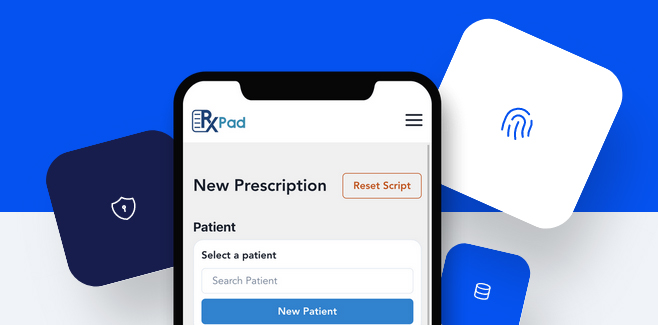
Store-and-forward teledermatology has huge benefits, but the lack of reimbursement is putting GPs off using the service, experts say.
The first store and forward case Dr Jim Muir ever got was a single polaroid photo mailed in an envelope from north Queensland to Brisbane in the 1990s.
The dermatologist immediately identified warfarin necrosis and rang the referring doctor, who had written his number on the back of the photo.
“I rang him up and said, is that patient on warfarin? He said ‘yeah, how do you know?’ Well your photo shows warfarin necrosis, which is a very serious complication of warfarin therapy,” recalled Dr Muir.
Now new research shows store-and-forward (SAFT, or asynchronous) teledermatology – in which a patient’s case notes and clinical images are sent to a dermatologist to review at a later time – had several advantages over videoconferencing (or synchronous) consultations (which may come as a relief to many doctors and patients).
Townsville University Hospital and James Cook University researchers have reviewed 12 studies of Australian store-and-forward teledermatology services.
They found that overall, teledermatology was cost-effective, reduced waiting times, increased the management of skin conditions in primary care as well as continuity of care and reduced the impact of geographical isolation for rural patients and doctors.
But they said SAFT had several advantages over videoconferencing teledermatology.
“Appointment times and doctor-patient co-availability are not necessary, internet speed is less critical, and usually allows provision of higher resolution images of skin lesions, and therefore may increase diagnostic proficiency,” they wrote in the Australasian Journal of Dermatology.
The researchers said that on average, patients waited for shorter times to see a dermatologist after using a SAFT service compared with the average time it took for patients to be seen face-to-face at a large public dermatology clinic.
But they added that adequate reimbursement for SAFT was “challenging”.
“Since the outbreak of covid-19, the Australian government has established reimbursement for synchronous forms of teledermatology, but the Medical Services Advisory Committee (MSAC) suggests more research is needed to justify funding for SAFT services.”
The researchers said a survey of clinicians had shown most GPs believed the system was easy to use and would use it again, while another survey showed 60% of GPs believed the service was beneficial to them.
Another study found the number of SAFT referrals did not accurately reflect the demand of the service, they said.
“Possibly GPs’ expectations of the service were not met or there were limitations such as time-consuming nature of referrals, increased workload, technological complications experienced or inadequate reimbursement.”
But the researchers said there was evidence dermatology advice via SAFT was more accurate than a GP’s diagnosis.
They added it was difficult to determine whether certain skin conditions were more suited to management via SAFT.
“Previous literature indicates that high concordance rates were found in the broad categories: infections, tumours and paediatric inflammatory dermatoses.”
Since receiving that first polaroid photo of warfarin necrosis in the mail, Dr Muir established Tele-Derm National, which assists with more than 400 teledermatology cases each year.
“Teledermatology has high acceptance amongst all of the people with skin in the game – the patients who are managed with it, the doctors who refer with it, and the dermatologists who deliver the services,” Dr Muir told Dermatology Republic.
Dermatology was well suited to telemedicine and there was plenty of evidence that teledermatology was effective, he said.
“There’s an expression: do we cut bait or do we start fishing?
“I think there’s more evidence that you can poke a stick at that it’s very effective both in diagnostic management terms and financially.
“Probably the time has come to use it as a legitimate arm of the medical services and formalise it, but it’s a big burden on the referring doctors.
“Most patients don’t know that this option exists. And I suspect if they did know it existed, they’d put their hand up for it.”
Dr Muir agreed with the researchers that store-and-forward teledermatology had advantages over video consultations because a dermatologist could review the images at any time.
And compared with viewing a skin condition on a video call, the image quality of a photo was far higher, he said.
Dr Muir said the images used in teledermatology also made triage much easier than using a referral letter.
“It’s very hard to triage from a referral. ‘Mr Johnson has a pigmented lesion on his forearm.’ Well, that could be anything from a piece of dirt, which has been referred in before, to a malignant melanoma. So I can’t tell you whether it’s urgent or not, or whether that’s not dermatology, that’s infectious diseases.
“We can just solve it or expedite it down the appropriate pathway. If you manage what you can manage via telemedicine, it frees up face-to-face consultations for the things you can’t manage via telemedicine.”
Videoconferencing had its disadvantages, he said, because it took a dermatologist away from face-to-face work, and the patient and doctor had to be in the same virtual room at the same time.
“For some reason, the government loves video conferencing, whereas everybody I know hates video conferencing.
“Store and forward is much preferable. Everybody I know that does video conferencing usually asked for digital photos to be sent in first.
“You’ve got more time. Because I’ve got all the time in the world to respond, I can give a much more comprehensive answer to the doctor than if I was doing a video conference.
“It’s so easy, I don’t even consider it work. It’s just sort of a hobby.”
But the bad news for GPs was that any extra workload in store-and-forward teledermatology fell on them, he said.
“The rate limiting step is reimbursement for the referring general practitioner. That GP is spending a lot more time with that patient than writing the referral.
“They’re taking responsibility that they’ve taken an accurate history, that they’ve taken representative photos. They’ve got to do the biopsies, order the blood tests, review the blood tests, explain the treatments.”
The time, responsibility and skill required by the referring doctor when using teledermatology was far greater, he said.
“That’s what should be recognised in the Medicare schedule if you want to get that off the ground. Everybody saves in that situation, in terms of time and money, except the GP.
“The patient doesn’t have to travel. They don’t have to wait for an opinion. We turn around cases that come in to Tele-Derm National within 24 hours, often within less than six. You can’t get that face-to-face very easily.
“The dermatologist doesn’t have to see the patient, can deal with that case much quicker than face-to-face, but the GP in the middle has a prolonged referral process and then a management process that would otherwise have been undertaken by the dermatologist that they referred to.”
Despite those challenges, teledermatology acted a type of ongoing education for GPs, Dr Muir said.
“They’re intimately involved with the whole diagnostic and management process, so the educational benefit from that is enormous. It’s like being a registrar in the hospital.
“Anecdotally I’ve been told on numerous occasions by doctors who use our service that they learn a lot from being that involved, as opposed to just getting a letter back three months later on a patient they might have forgotten about.”
And there was evidence teledermatology was just as accurate as face-to-face consultations, he said.
“There’s heaps of work now showing that the accuracy of a telemedicine consultation is very high and that the interobserver concordance between teledermatology and face-to-face dermatology is high so far more often than not, the teledermatology diagnosis will be the same as the face-to-face diagnosis.”
Dr Muir said the ideal dermatologist-to-patient ratio was around one full-time doctor for every 50,000 patients.
But in Liverpool in western Sydney, there’s one dermatologist for every 100,000 people while in the eastern suburbs of Sydney, there’s 5.5 dermatologists per 100,000.
“Liverpool Hospital as busy as a one-armed paper hanger.
“Another barrier to consultation is the huge disparity in numbers.”





